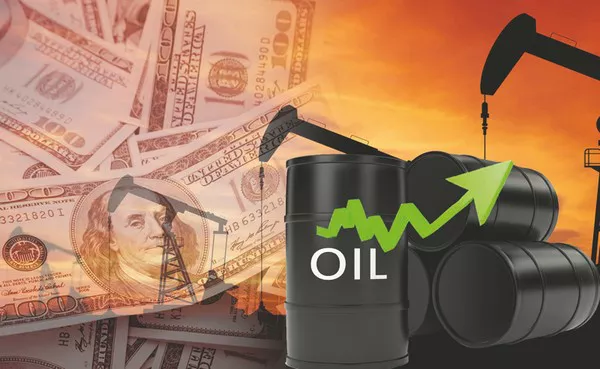Oil prices experienced a decline on Monday, extending losses observed in the previous session, following a rise in the dollar amidst market perceptions that higher-than-anticipated inflation might delay anticipated cuts to U.S. interest rates, which have been capping the growth of global fuel demand.
Brent crude futures edged down by 14 cents, representing a 0.2% decrease, to reach $81.48 a barrel by 0656 GMT. Concurrently, U.S. West Texas Intermediate crude futures (WTI) slipped by 22 cents, or 0.3%, to settle at $76.27 a barrel, influenced by the strengthening of the U.S. dollar. The appreciation of the dollar renders oil more costly for holders of alternative currencies.
The downtrend follows losses witnessed last week, with Brent experiencing a decline of approximately 2%, while WTI saw a more substantial drop of over 3%. This decline ensued as markets postponed the anticipated commencement of U.S. interest rate cuts by a period of two months due to an upswing in inflation.
According to Auckland-based independent analyst Tina Teng, the retreat of the risk-on sentiment appears evident following the market rally led by Nvidia last week. This retreat is attributed to heightened expectations of sustained higher interest rates, which have contributed to the strengthening of the U.S. dollar, thereby exerting pressure on commodity prices.
Since November, oil prices have maintained a trading range between $70 and $90 a barrel. Despite OPEC+ supply cuts and ongoing conflicts, including the Israel-Hamas dispute, concerns regarding oversupply in the U.S. and subdued demand in China have persisted.
The geopolitical risk premium stemming from the Yemeni Houthis’ assaults on ships in the Red Sea remains relatively low, amounting to a $2 per barrel increase in Brent prices, according to analysts at Goldman Sachs. Nevertheless, the bank has revised its summer peak price forecast to $87 a barrel, citing disruptions in the Red Sea that have led to larger-than-anticipated declines in OECD member countries’ stockpiles.
Goldman Sachs anticipates global oil demand to increase by 1.5 million barrels per day (bpd) in 2024, although it has revised China’s demand forecast downward while raising those for the U.S. and India.
In a separate development, attention is focused on the potential impact of U.S. sanctions on Russia’s oil supply after Moscow’s leading tanker group Sovcomflot was sanctioned last Friday.
Further contributing to global energy supplies, Qatar intends to augment liquefied natural gas production despite a recent significant decline in global prices.
In the U.S., analysts at ANZ anticipate a potential decline in oil stockpiles in the forthcoming weeks as refineries resume operations following maintenance, a development that could lend some support to oil prices.
According to energy services firm Baker Hughes, U.S. energy firms added the highest number of oil rigs since November this week, marking the most significant increase in a month since October 2022.


